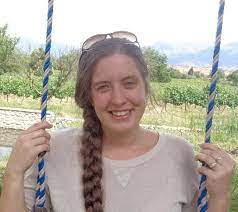|
The Green Burial Council recognizes the importance of working collaboratively with local communities and their governments to ensure safe, sustainable burial options for diverse populations. The burial industry, and the Green Burial Council specifically, relies on scientifically proven methods and rigorous industry standards to ensure that the services and products being offered protect both the environment and the client’s safety.
In the last year, there have been attempts to ban or otherwise delay the opening of cemeteries that practice green, natural, and/or conservation burial. In Brooks Township, Michigan, the Township Board recently passed the “Cemetery Ordinance” which bans any new cemeteries. This was passed in an apparent reaction to the anticipated opening of West Michigan Burial Forest, a local conservation cemetery. Spurred by a small group of residents with misinformed concerns about water contamination and other hazards, the Township has taken a strong stance against the lawful opening of businesses that serve their own constituents. Our organization sees this as not only an infringement on the rights of our fellow citizens, but as a true degradation of what local government stands for. It is the duty of elected officials to act in the best interest of their constituents, protecting them from malicious actors and avoidable environmental harms. It is also the duty of elected officials to see past misinformation and to consult appropriate specialists on topics outside of their own expertise. We believe that Brooks Township’s ordinance stands on a weak foundation of misinformation about green burial’s negative impact on soil and water, and other similar fears. Though individuals may experience genuine trepidation about a naturally interred body’s impact on their environment, local governments can easily find scientific evidence proving no such impact when burial practices are performed according to industry standards. This is not new science: “green burial” is a relatively new term for an ancient practice. Certain religious customs have always practiced a form of “green” burial. Both Jewish and Muslim faiths do not typically utilize embalming, cremation, or nonbiodegradable materials in their burial traditions. For local governments to create reactionary policies against cemeteries that offer green burial is to support cultural incompetence, disrespecting the needs and rights of their own constituents. Furthermore, banning any cemetery—conventional or green—poses a threat to public health for the safe disposition of human remains. Grave site space is limited by the borders of existing cemetery properties, the expansion of which is necessary due to community demand. It is the duty of local governments to work with the funeral industry to ensure there are professional funeral and cemetery businesses available to serve their community, not only for public health, but to meet the diverse needs of their constituency at the end of life, depending on their cultural and religious beliefs. The Green Burial Council takes a strong stance against local governments creating policy or passing ordinances based on incorrect beliefs about natural burial practices. Doing so indicates a lack of respect for the proven science of the industry and a willingness to align with belief systems that disrespect the religious and cultural practices of their own constituents. Minnesota adopted a two-year moratorium on new cemeteries offering green burials, beginning 7/1/23. A related study has been ordered of the environmental and health impacts of green burials. The Green Burial Council has released this statement about the moratorium:
"The Green Burial Council supports and advocates for the legal creation and operation of green cemeteries for all faiths and secular communities across the United States. It also understands that in some instances local public opinion may be in opposition to any cemetery, green or otherwise, and it is important to garner local support for any successful venture. But, we believe that a moratorium on the formation of new green cemeteries in all of Minnesota is ill-informed and does not benefit the citizens of this, or any other, state. The research that has been conducted demonstrates that green burial is a natural, efficient, and safe disposition option when best practices are followed. Establishing a natural burial site can be a meaningful way for a community to connect to the environment in their care and express their belief systems. By meeting the need for a simple way to be returned to the earth, and ensuring that the land will be cherished by families for generations to come, green burial is something that all Americans, and Minnesotans, should be allowed to choose for themselves or their loved ones."  Image source: Pexels Image source: Pexels When a loved one passes, it is certainly natural to go through a period of mourning. However, after attending to an eco-friendly burial, it’s worth considering how you can move forward in honoring the memory of your loved one who has passed. Many people are embracing a ‘celebration of life’ as an event that focuses on joyful memories rather than the pain of loss.  Image Source: Unsplash Image Source: Unsplash When the end of a loved one’s life approaches, difficult decisions must be made. From choosing the right palliative and hospice care teams to selecting a body disposition plan, your priority is to make your loved one feel at ease in their final days. However, end-of-life care, when not performed with sustainability in mind, can produce a large amount of medical waste, travel costs, and other harsh emissions.  Image Source: Unsplash Image Source: Unsplash Many people love their home so much that they choose to stay in that one place until death – or even after. The idea of a backyard burial is both old and new and can provide a cost saving alternative to a standard burial. It’s also typically more eco-friendly than getting buried in a traditional cemetery.  Baldwin Hill Conservation Cemetery Baldwin Hill Conservation Cemetery Conservation burial is the most environmentally stringent of the Green Burial Council’s burial ground standards. In addition to meeting all standards required of hybrid and natural burial grounds, conservation burial requires the following requirements:  Prepared by the Green Burial Council's board of directors for distribution on 3/22/22. The Green Burial Council's mission is to inspire and advocate for environmentally sustainable, natural death care through education and certification. We aim to hold our product providers to the highest standards and expect them to treat all descendants with respect, and engender trust between members of the deathcare community.  Written by Tamsin Ramone & Alyssa Wormald for the Green Burial Council. Read more about the authors at the end of this article. The Green Burial Council was founded to help educate people who are interested in gentle end-of-life options. When researching burial alternatives and cremation, here are some things to consider.  Written by Miranda Booher for the Green Burial Council. Read more about the author at the end of this article. There comes a time in every pet owner’s life when you realize your furry friend doesn’t have much time left. They grow slower on their walks, develop age-related conditions, and don’t seem to enjoy life as much as they used to when they were a pup.  Ariel Leath Back in 2008, Pete McQuillin and his wife Nancy Chubb had a conversation familiar to many of us. They discussed their end of life wishes, speaking candidly about their desires for a simple return to the Earth -- a green burial. Neither of them realized it at the time, but in expressing this desire, they tipped the first domino toward creating a community that forever changed the green burial landscape. |
Call for EntriesWe welcome original content with unique perspectives for the GBC Blog, preferably not previously published. The views and opinions expressed on the GBC Blog are those of the authors and do not necessarily reflect the official position or policies of the GBC. Submit entries by email Archives
February 2024
|
 RSS Feed
RSS Feed

